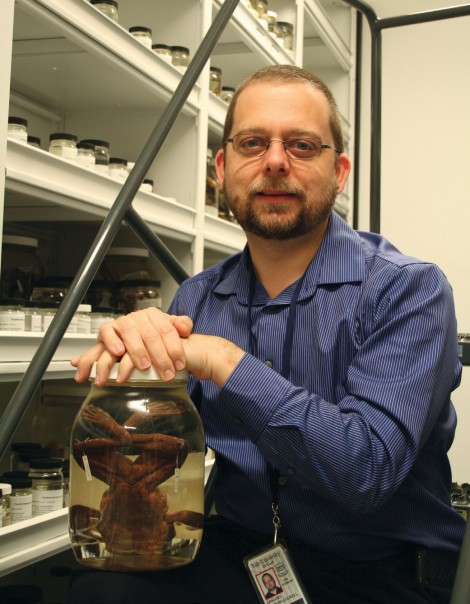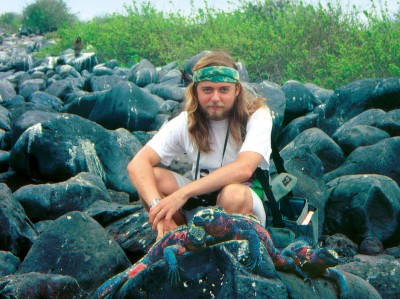
Discovering Don Fausto
Not all Galápagos tortoises are the same. At least that’s what zoologist Gregory Watkins-Colwell ’91 recently discovered. Watkins-Colwell and a team of scientists identified a new species of Galápagos tortoise that previously went under the radar because scientists assumed that all of the Galápagos tortoises shared the same genetic makeup.
Watkins-Colwell says that it is always important not to make assumptions, which is a rule he learned at Ohio Wesleyan.
Watkins-Colwell is the collections manager at the Yale Peabody Museum of Natural History, one of the world’s oldest and largest university natural history museums. He says when colleagues in the lab across the hall studied the Galápagos tortoises using molecular techniques, they quickly realized that the molecular makeup of the reptiles actually differs significantly. Digging deeper, they found that the differences lie mostly in the DNA sequences, and slightly in the shell morphology.
Watkins-Colwell, who majored in pre-professional zoology, was selected to examine the skull, describe its morphology, and photograph it. He says that the skull is now the “holotype” of the species, which means it is the specimen used as the basis for the description and name of the new species.
According to scientists, the new species of Galápagos tortoise lives on the Santa Cruz island in a lowland known as Cerro Fatal or “Deadly Hill.” This new species is uniquely named “Don Fausto” after a 75-year-old park ranger who dedicated his life to helping the endangered tortoises. Watkins-Colwell also helped identify a new species of leopard frog in 2014.

When not making impactful scientific discoveries, he manages the research specimen collection of amphibians, reptiles, and fishes. It’s a career path that started at the Ohio Wesleyan University Museum of Zoology, he says. “[That] was the first time I worked in an academic museum collection, and now I do it every day!”
As part of his job, Watkins-Colwell travels the world to do field work. “A couple years ago I went to Brunei to participate in a rapid assessment of the biodiversity of a mountain,” he says. He participates in several professional organizations, including the Society for the Study of Amphibians, previously known as the Ohio Herpetological Society.
Watkins-Colwell also serves as a part-time faculty member at OWU. This usually involves hosting OWU interns and externs at the Yale museum where he works.
Watkins-Colwell and his wife, Kellie, have two children who he says keep them busy, but he still finds time to keep captive geckos and read science fiction.
